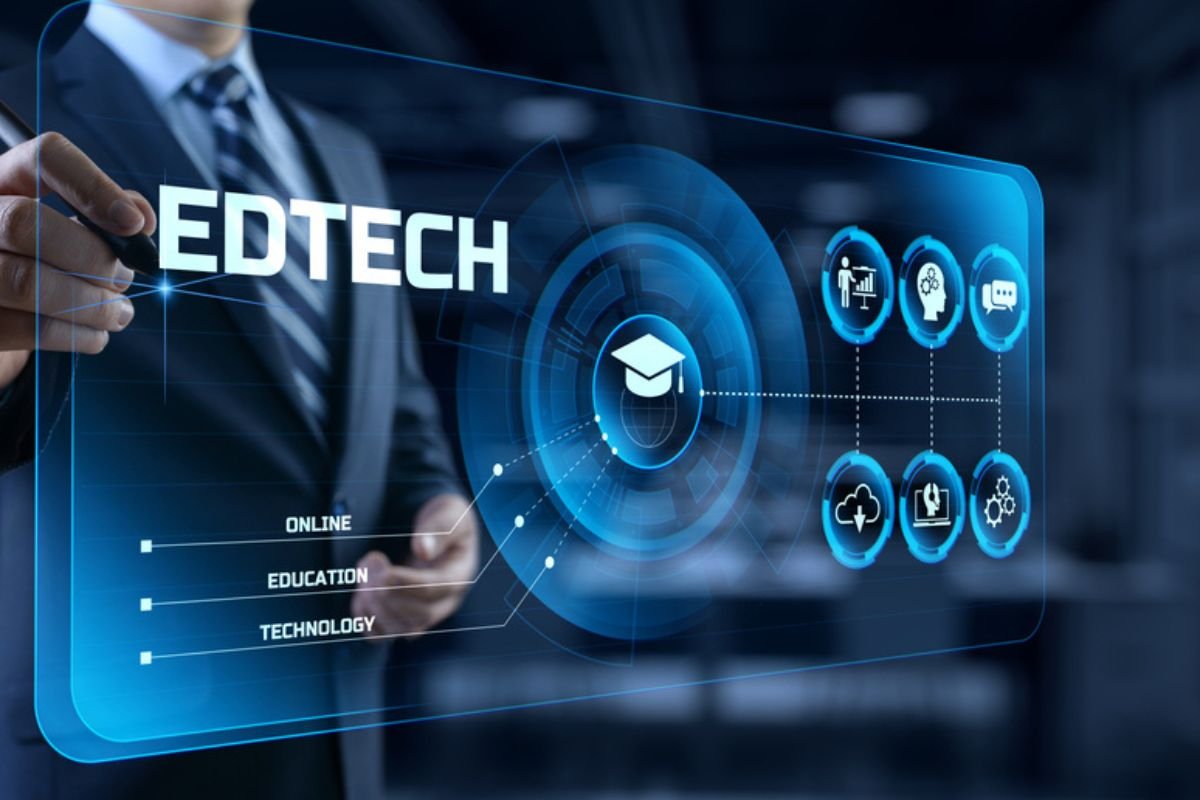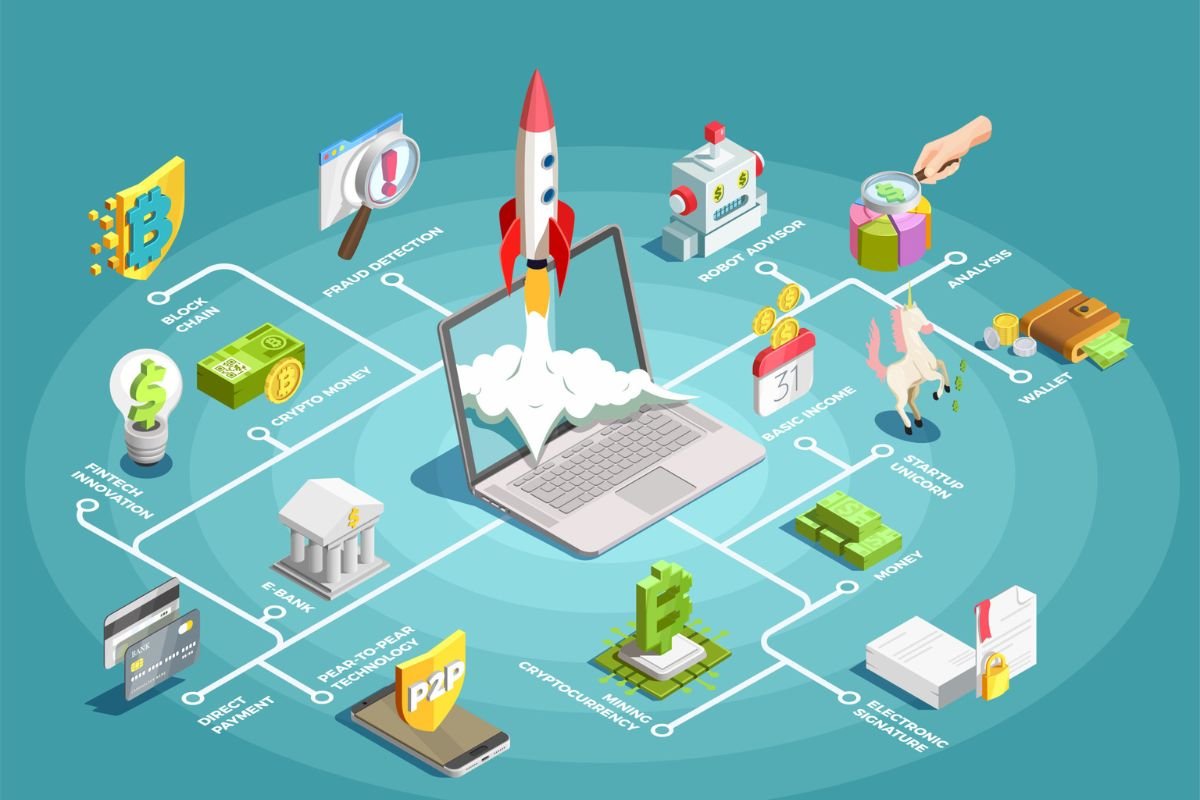As EdTech 3.0 reshapes the education landscape with personalized, AI-driven solutions, it brings both unprecedented opportunities and formidable challenges. From revolutionizing learning through cutting-edge technologies like AR/VR and real-time analytics to addressing critical issues such as the digital divide and data privacy, this new frontier is transforming how knowledge is imparted and accessed. However, scaling these innovations requires overcoming resistance, ensuring equitable access, and navigating high development costs. This article delves into the pivotal innovations powering EdTech 3.0, the challenges that lie ahead, and the market opportunities poised to redefine the future of learning and workforce development.
Innovations Shaping the Future of Personalized Learning
Learning Analytics: Data-Driven Insights for Tailored Education
At the heart of EdTech 3.0 lies the power of data. Learning analytics is transforming how educators and students engage with learning materials by providing real-time, actionable insights into student performance. Platforms equipped with advanced analytics tools analyze learner behavior, tracking everything from participation rates to exam results, and use this data to generate feedback for both students and teachers. These insights enable timely interventions, allowing educators to pinpoint where students may be struggling and provide targeted support to keep them on track. Moreover, learners themselves benefit from personalized recommendations based on their unique learning patterns, ensuring that they stay engaged and achieve their full potential. By leveraging this data-driven approach, EdTech is not only enhancing the quality of education but also optimizing the learning process for individuals.
Voice and NLP Technologies: Making Learning More Accessible and Interactive
Natural Language Processing (NLP) and AI-powered voice assistants are revolutionizing the way students interact with learning platforms, making education more accessible and engaging. Google’s Bolo, for example, uses voice recognition and NLP to assist children in learning to read, providing real-time feedback as they practice. By recognizing pronunciation errors and suggesting corrections, Bolo creates an interactive and immersive learning environment that feels less like a traditional lesson and more like a conversation with a tutor. These technologies are particularly impactful for young learners and those with disabilities, breaking down barriers that might otherwise impede their ability to engage with traditional learning tools. As voice and NLP technologies continue to evolve, they promise to make personalized education even more dynamic, intuitive, and inclusive.
Collaborative Learning Platforms: Fostering Global Connections and Knowledge Sharing
The future of education is not just about individual learning; it’s also about collaboration and shared knowledge. Collaborative learning platforms are redefining how students interact with one another, enabling peer-to-peer engagement across geographical boundaries. Tools like Microsoft Teams for Education and ClassDojo allow students from different parts of the world to work together on projects, share resources, and exchange ideas. These platforms foster a sense of community and inclusivity, empowering learners to gain insights from diverse perspectives and collaborate in ways that were previously impossible. As global learning communities grow, these platforms help cultivate critical skills such as communication, teamwork, and problem-solving—key attributes for success in the modern workforce.
Real-Time Feedback Mechanisms: Accelerating Learning through Instant Assessments
One of the most powerful innovations in EdTech 3.0 is the integration of AI-driven grading systems that enable real-time feedback. These systems can instantly assess assignments, quizzes, and even essays, providing learners with immediate insights into their performance. This rapid feedback loop is invaluable for students, as it allows them to identify and correct mistakes quickly, ensuring that learning is both efficient and effective. Furthermore, AI-powered feedback systems often offer personalized learning recommendations, guiding students toward additional resources or exercises that target areas of weakness. This tailored approach ensures that each student receives the support they need, precisely when they need it, enhancing their overall learning experience and improving long-term retention.
Together, these innovations—learning analytics, voice and NLP technologies, collaborative platforms, and real-time feedback systems—are shaping the future of personalized learning. They empower both learners and educators, creating a more dynamic, interactive, and efficient educational landscape. As these technologies continue to evolve, the possibilities for personalized, student-centered education are limitless, offering new ways to engage, support, and guide learners toward success.
Challenges in Scaling EdTech 3.0
While the promise of EdTech 3.0 is undeniable, there are several critical challenges that must be addressed in order to unlock its full potential and achieve widespread adoption across diverse educational landscapes.
Digital Divide: Bridging the Gap in Access
One of the most pressing challenges facing EdTech 3.0 is the digital divide—unequal access to technology, particularly in underserved regions. In many parts of the world, access to reliable internet and modern devices is limited, hampering the effectiveness of EdTech platforms. While initiatives like India’s Digital India program and the global rollout of 5G networks are making strides in bridging this gap, the reality is that millions of students still lack the necessary infrastructure to benefit from digital learning. For EdTech 3.0 to achieve its promise of personalized learning for all, bridging this digital divide is critical. Governments, NGOs, and private players must work together to ensure that the necessary resources—both hardware and internet access—are made available to students in remote and rural areas.
Data Privacy Concerns: Protecting Learner Information
With EdTech 3.0 relying heavily on data analytics to provide personalized learning experiences, the privacy and security of learner data become paramount concerns. Platforms are collecting vast amounts of sensitive data—from personal details to learning behaviors—and mishandling or breaches of this information can have serious consequences. Data privacy regulations like the GDPR (General Data Protection Regulation) in Europe have set the stage for stricter governance of digital data, but much more needs to be done globally to ensure that data privacy is prioritized. For businesses and educators to gain the trust of learners and parents, robust data governance frameworks must be implemented. This includes secure data storage, transparent data usage policies, and compliance with relevant privacy regulations. Without these safeguards, EdTech could risk losing credibility and hindering its growth.
Resistance to Change: Overcoming Institutional Hesitancy
Despite the clear benefits of EdTech 3.0, many traditional educators and educational institutions remain resistant to change. This hesitance often stems from a lack of understanding about how new technologies can enhance the learning process, as well as concerns about the perceived complexity of implementing these tools. For EdTech 3.0 to scale, institutions must be equipped with the necessary training, resources, and support to integrate AI, AR/VR, and other advanced technologies into their teaching methodologies. Additionally, there needs to be greater emphasis on demonstrating the tangible benefits of these tools through pilot programs, case studies, and evidence-based results that showcase improvements in student outcomes. Overcoming this resistance will require a concerted effort from all stakeholders—government bodies, educational institutions, and technology providers—to collaborate in fostering a culture of innovation and continuous professional development.
High Development Costs: Investing in the Future of Education
The development of cutting-edge technologies like AI-driven algorithms, AR/VR content, and adaptive learning systems is capital-intensive. Many startups and smaller companies find it difficult to scale their solutions due to the high upfront costs associated with creating these sophisticated technologies. Additionally, as EdTech 3.0 evolves, the need for continuous updates, content creation, and platform maintenance further adds to the financial burden. While venture capital and funding opportunities are growing in the EdTech space, the high development costs remain a significant barrier for small players hoping to innovate. To overcome this challenge, partnerships between established tech companies, governments, and educational institutions could provide the necessary financial support to enable wider-scale implementation of EdTech 3.0 solutions. Moreover, innovative business models, such as pay-per-use or subscription-based pricing, could help reduce financial barriers for users while ensuring sustainability for technology providers.
While EdTech 3.0 holds immense promise for reshaping education globally, addressing these challenges is essential for ensuring its scalability and long-term success. Governments, educators, and technology companies must collaborate to create a more equitable, secure, and supportive ecosystem that empowers learners and educators alike. Only then can we fully realize the transformative potential of EdTech 3.0 in democratizing and personalizing education for all.
The Socioeconomic Impact of EdTech 3.0
The transformative power of EdTech 3.0 extends beyond classrooms and corporate training rooms, reaching deep into society to address critical challenges and create opportunities for economic growth. By leveraging advanced technologies, EdTech 3.0 is reshaping how individuals acquire knowledge, develop skills, and adapt to the changing demands of the global economy.
Bridging the Skills Gap: Preparing the Workforce of Tomorrow
The rapid pace of technological innovation has created a global skills gap, with industries requiring workers to master new tools and methodologies to remain competitive. EdTech 3.0 platforms are stepping in to fill this void by offering reskilling and upskilling opportunities tailored to the demands of the digital economy.
For instance, Simplilearn, a leading EdTech platform, provides industry-recognized certifications in fields like AI, cloud computing, and digital marketing. These programs are designed to equip professionals with job-ready skills, ensuring they stay relevant in the evolving job market. By integrating adaptive learning technologies, these platforms create personalized learning paths, enabling workers to learn at their own pace while meeting industry benchmarks.
The result is a workforce that is better prepared to tackle the challenges of automation and digital transformation, fostering economic growth and reducing unemployment in tech-driven sectors.
Enhancing Education Accessibility: Bridging the Divide
One of the most profound impacts of EdTech 3.0 lies in its ability to democratize education, breaking down barriers related to geography, language, and socioeconomic status. By harnessing AI and machine learning, platforms can customize content to suit individual learning needs, making high-quality education accessible to even the most underserved communities.
In India, platforms like Vedantu are leading the charge by providing localized content tailored for rural students. These platforms use live interactive sessions and AI-driven insights to deliver a classroom-like experience to learners who may lack access to traditional educational resources. Moreover, EdTech 3.0 solutions are increasingly incorporating regional languages into their offerings, ensuring inclusivity for non-English-speaking populations.
This increased accessibility is not just about education; it’s about empowerment—giving learners the tools they need to break out of cycles of poverty and inequality, thereby driving social and economic mobility.
Supporting Lifelong Learning: Knowledge for Every Stage of Life
In a world where the concept of a single, lifelong career is becoming obsolete, lifelong learning has emerged as a cornerstone of personal and professional growth. EdTech 3.0 platforms like Coursera and Udemy are playing a pivotal role in enabling individuals of all ages to acquire new skills and adapt to changing career landscapes.
These platforms offer a vast array of courses in fields ranging from data science to creative arts, catering to diverse audiences, including career changers, retirees, and those seeking personal enrichment. For example, a mid-career professional can learn the fundamentals of coding, while a retiree might explore photography or digital storytelling.
By providing affordable, on-demand learning opportunities, EdTech 3.0 is democratizing education and fostering a culture of continuous improvement. This not only benefits individuals but also contributes to a more adaptable and innovative workforce, essential for navigating the complexities of the 21st-century economy.
A Catalyst for Socioeconomic Transformation
The socioeconomic impact of EdTech 3.0 is profound and far-reaching. By bridging the skills gap, enhancing education accessibility, and supporting lifelong learning, these technologies are not only transforming education but also driving economic growth and social equity. The ripple effects are evident in more inclusive job markets, a more empowered workforce, and communities that are better equipped to face the challenges of a rapidly evolving world.
As governments, businesses, and educators embrace the potential of EdTech 3.0, the vision of a truly equitable and knowledge-driven global society moves closer to reality.
Market Opportunities and Future Outlook
As EdTech 3.0 gains momentum, its transformative potential is drawing attention from investors, policymakers, and businesses alike. With robust growth drivers and emerging technologies on the horizon, the industry is poised for a future filled with opportunity and innovation.
Emerging Markets: A New Frontier for EdTech Expansion
Emerging markets in regions such as India, Southeast Asia, and Africa present some of the most promising opportunities for EdTech growth. These regions are characterized by young populations, increasing internet penetration, and a growing demand for affordable, high-quality education.
In India, government-backed initiatives such as the National Education Policy (NEP) 2020 and Digital India are paving the way for widespread digital learning adoption. The NEP 2020 emphasizes the integration of technology in classrooms, promotes coding and STEM education from an early age, and supports localized e-learning content for rural and underprivileged communities. This policy is expected to unlock vast potential for EdTech startups, particularly in the areas of K-12 education, vocational training, and test preparation.
Similarly, in Africa, where over 60% of the population is under 25, EdTech solutions are addressing critical gaps in educational infrastructure. Companies like Andela and uLesson are equipping young learners with skills that align with global job market demands, ensuring that these emerging markets contribute to the global digital economy.
Corporate Learning: Reskilling for the Future of Work
As industries worldwide face rapid automation and technological disruption, businesses are recognizing the need for continuous reskilling and upskilling of their workforce. The demand for personalized corporate training programs has surged, with enterprises seeking to maintain a competitive edge in an evolving marketplace.
Platforms like LinkedIn Learning are at the forefront of this shift, offering tailored learning paths that address specific skill gaps within organizations. By leveraging data analytics, these platforms provide actionable insights into workforce development, enabling companies to deliver targeted training at scale. For instance, employees in technology sectors can learn AI and data science, while professionals in customer service can enhance soft skills like communication and empathy.
The adoption of corporate EdTech solutions is no longer limited to large enterprises. Small and medium-sized businesses (SMBs) are also investing in online training tools, recognizing their value in fostering employee growth, productivity, and retention.
Upcoming Technologies: Revolutionizing the Learning Experience
The future of EdTech lies in the integration of emerging technologies that promise to elevate personalized learning to unprecedented levels.
- Quantum Computing: Although still in its infancy, quantum computing holds immense potential for EdTech. Quantum algorithms could revolutionize the way data is processed, enabling hyper-personalized learning experiences. For example, quantum systems could analyze complex datasets in real-time to predict a learner’s optimal path, ensuring tailored content delivery at an unparalleled scale.
- Internet of Things (IoT): IoT is set to redefine classroom environments through the creation of smarter classrooms. IoT-enabled devices can monitor student engagement, track progress, and adapt learning environments in real-time. For instance, smart whiteboards can provide interactive lessons based on student feedback, while connected devices like tablets ensure seamless access to resources.
- Advanced AR/VR Integration: Future AR/VR technologies will likely become more affordable and accessible, enabling immersive, hands-on training across industries. For example, medical students could practice complex surgeries in virtual settings, while engineering trainees could simulate large-scale construction projects.
A Global Industry Poised for Growth
With an estimated market size projected to surpass $400 billion by 2025, the EdTech sector is ripe for expansion. Emerging markets, corporate training demand, and breakthrough technologies are aligning to create unparalleled opportunities for businesses, investors, and educators.
However, the success of this growth will hinge on collaboration among key stakeholders—governments, private sector players, and educational institutions—to address challenges such as digital equity and data privacy.
By capitalizing on these market opportunities, the EdTech industry is not just transforming education but also contributing to a future where learning is accessible, adaptable, and inclusive for all.
EdTech 3.0 is not merely a technological evolution; it is a paradigm shift in how education is conceptualized and delivered. By harnessing cutting-edge innovations such as AI, AR/VR, and data analytics, this new era is redefining learning as a deeply personalized and transformative experience. These tools are breaking barriers of geography, age, and socioeconomic status, empowering learners to access tailored education anytime, anywhere.
However, the path to scaling these innovations is not without its hurdles. Challenges such as the digital divide, data privacy concerns, and resistance to technological adoption underscore the need for proactive collaboration. Governments, educators, and businesses must work in tandem to ensure equitable access to these revolutionary tools, safeguard learner data, and foster an ecosystem where innovation thrives.
The potential of EdTech 3.0 to shape the future is immense and far-reaching. It promises to not only equip individuals with critical skills for the modern economy but also to democratize learning for underserved communities worldwide. As we stand at the threshold of this transformative era, one thing is clear: EdTech 3.0 is more than a leap in technology—it’s a reimagining of how humanity learns, grows, and connects in an increasingly interconnected world.
The next chapter in education has begun, and it is brighter, more accessible, and profoundly innovative. By embracing this transformation with vision and intent, we can ensure that the power of education reaches every corner of the globe, empowering generations to thrive in a world of infinite possibilities.
To understand the evolution of EdTech and the transformative trends driving the rise of EdTech 3.0, don’t miss our companion article: ‘EdTech 3.0: The AI-Driven Revolution in Personalized Learning‘.






